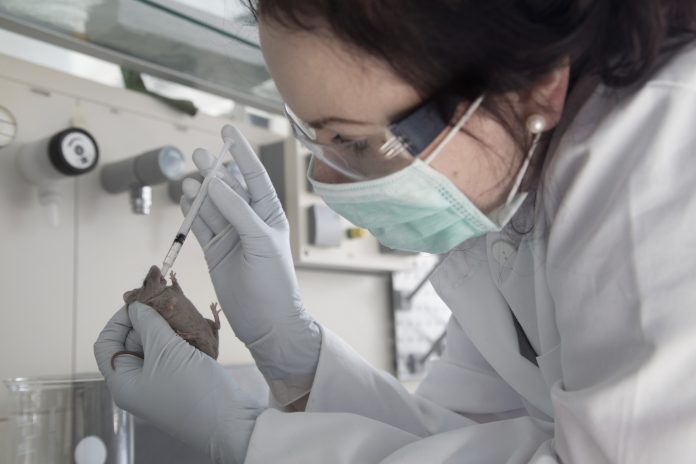
A cytomegalovirus (CMV) vector-based gene therapy delivered monthly, by inhalation or intraperitoneally, reversed aging-associated decline in a mouse model. Exogenous telomerase reverse transcriptase or follistatin genes were each safely and effectively delivered. The treatment significantly improved biomarkers associated with healthy aging, and mice’s lifespans were increased up to 41% without an associated increased risk of cancer.
The study’s lead author was Dabbu Kumar Jijyan, of the Depart of Microbiology, Biochemistry, and Molecular Genetics at Rutgers New Jersey Medical School. It was published in PNAS.
Unlike AVV, lentiviruses, or other viral vectors commonly used, cytomegaloviruses (CMVs) have a large genome size and ability to incorporate multiple genes. Further, CMVs do not integrate their DNA into the host genome during the infection cycle, thereby reducing the risk of insertional mutagenesis. Human CMV has been used as a safe delivery vector in human clinical trials.
In this study, the researchers sought to determine whether the CMV vector could be an effective and safe gene delivery vehicle for two aging-protective factors—telomerase reverse transcriptase (TERT) and follistatin (FST).
The team found that the mouse cytomegalovirus (MCMV) carrying exogenous TERT or FST (MCMVTERT or MCMVFST) extended median lifespan by 41.4% and 32.5%, respectively. CMV was used successfully as both an intranasal and injectable gene therapy system.
The treatment significantly improved glucose tolerance and physical performance, as well as preventing body mass loss and alopecia. Further, telomere shortening associated with aging was ameliorated by TERT and mitochondrial structure deterioration was halted with both treatments. Intranasal and injectable preparations performed equally well in safely and efficiently delivering gene therapy to multiple organs, with long-lasting benefits and without carcinogenicity or unwanted side effects.
Aging is associated with a reduction in telomere repeat elements at the ends of chromosomes, which in part results from insufficient telomerase activity. The biological functions of the telomerase complex rely on TERT, which plays a major role in telomerase activation. Animals deficient in TERT have shorter telomeres and shorter lifespans. Further, recent studies on animal models support TERT’s potential therapeutic effects in increasing healthy longevity and reversing aging.
The follistatin gene, meanwhile, encodes a monomeric secretory protein that is expressed in nearly all mammalian tissues. In muscle cells, FST functions as a negative regulator of myostatin, a myogenesis inhibitory signal protein. FST overexpression increases skeletal muscle mass in transgenic mice by neutralizing the effects of various TGF-β ligands involved in muscle fiber breakdown, including myostatin and activin inhibition complex. In addition, FST knockout mice have smaller and fewer muscle fibers, show retarded growth, skeletal defects, and reduced body mass, and they die within a few hours after birth. Aged mice have exhibited loss of motor unit function with impaired neuromuscular junction transmission.
In addition, follistatin expression in aged mice not only increases muscle mass but also improves neuromuscular function, findings which suggest FST may have potential in the treatment of muscular dystrophy, muscle loss, and neuromuscular disorders.
The researchers write that “Based on this evidence and supporting assumptions, TERT and FST are among prime candidates for gene therapy protocols directed to improve healthy lifespans.”













